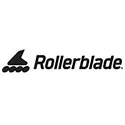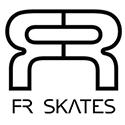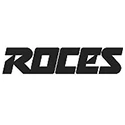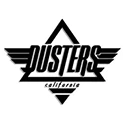Before we get into that, let's give you a little background on the history of skateboarding!
Where does the skateboard come from?
It is in the 1950s that the first skateboards appear. It is the surfers who, frustrated not to be able to take the waves the days when the weather was not favorable, develop the first skateboards. These "asphalt surfers" were from California or Hawaii. The boards of the time looked like small surfboards on wheels.
In the 1960s, the first boards equipped with roller trucks were sold by the store "Val Surf". The first contests are also born in Hermosa Beach in 1963. The disciplines are then centered around the slalom and freestyle. At the same time, teams of riders were formed and began to be sponsored. It was also in the 1960s that specific clothing brands for skateboarders were created.
Technological innovations, such as urethane wheels, were developed in the 1970s, allowing riders to perform even more tricks, and in 1976, the first skatepark was built in the United States. Skateboarding became more and more popular in America and Europe. In 1978, Alan Gelfand invented the most popular trick in skateboarding, the "ollie" (by the way, if you want to know more about this trick, don't hesitate to check our article "How to do an ollie").
The golden age of skateboarding is in the 1980s, when the discipline is now as important as BMX or rollerblading. Pro riders can now make a living from their sport, just like a basketball player or a footballer. In the 1990's, skateboarding is practiced in all regions of the world and gathers more and more followers.
Which board for your practice?
Now that you know a little more about the history of skateboarding, we're going to get to the heart of the matter and give you some tips on how to choose your board.
First of all, you have to determine what kind of skateboarding you want to do. In general, when you are a beginner you prefer to choose a versatile board, which allows you to do a bit of everything without having an incredible level. Then we go for the stroll, the street or the skate park. It will then be time to choose your second board because when you get better, you will realize that your "beginner" board will not be enough anymore. Or at least, you will quickly get bored.
To choose your skateboard, you have to choose the size of the deck (the board), in width. Namely, a narrow board is between 7.5 and 7.785 inches (1 inch equals about 2.54 cm). Intermediate boards are 8 to 8.5 inches and a wide board is at least 8.5 inches. Note that the wider the board, the more comfortable and "simple" the skateboarding will be. Indeed, the width plays on the stability. On the other hand, the narrower the deck, the more maneuverable it will be and the more tricks you will be able to perform. Be careful though, if you have big feet, you might not be very comfortable on a narrow board. When you buy a skateboard, you should think about this.
For a first skateboard, we recommend you to choose a width adapted to your size. If you want to ride on the street, a narrow board will be more adapted while you will need a wider board to ride in the skatepark. As you progress from beginner to intermediate level, you will see that these rules do not necessarily apply. Indeed, each rider has, with time, his preferences.
Let's talk about trucks: there are several settings, although again, once you have a little experience, you won't necessarily follow our advice. But in any case, to start with we advise you to set your trucks in low or mid if you want a versatile board or to do street. If you prefer to skatepark, then we recommend you to set your trucks in mid or high. The truck setting also determines the size of your wheels. If you want to ride low, you have to choose small wheels, while a mid or high truck will accept bigger wheels.
Let's talk about wheels. As for the other roller disciplines (roller or scooter), there are several diameters that exist. The hardness of the wheels, noted in shore A, is also to be taken into consideration. The lower the number, the softer the wheels and the higher the number, the harder they will be.
If you chose a versatile skateboard, take medium size wheels (52 to 56 mm) with a hardness of at least 97A. Besides, this wheel diameter is the one mostly used by skateboarders. For street skateboarding, it's better to use small wheels, from 50 to 52 mm with a hardness higher than 99A. Finally, for skatepark, 50 to 56 mm wheels will do the job, for a hardness of at least 98-99A. We reserve the soft wheels for cruisers and longboards.
One last thing to take into account: the grip. The grip is this piece of "sandpaper" which is stuck on your board. It allows a good grip when you are on your board. There are all kinds, from classic black to colored, through those with patterns, there is something for everyone. Often we choose it for its style but if you want to do street or skatepark, it is better that it is coarse-grained and rough.
Now you have all the cards in hand to start this great adventure and choose your first skateboard. If you hesitate, the most important thing is to enjoy yourself, so if you like one design more than another, go for it! You'll be even more proud to get out your beautiful board. And as we said, all this information is just a guide. With time and practice, you'll probably have preferences that won't follow these recommendations. So test and have fun! And above all, don't forget to wear a minimum of protection!










































